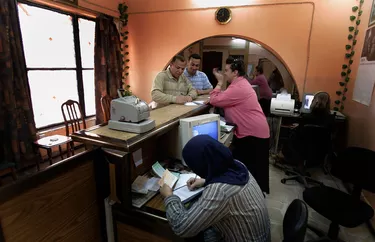
If a bank has 1,000 customers who have open checking accounts, and many of its depositors request withdrawals at the same time, the bank may not hold enough money to immediately reimburse all of these depositors. If the bank only has enough cash available to hand out to the first 500 people in line, the 501st depositor does not receive his cash back immediately, which is the sequential service constraint.
Time Value
Video of the Day
A sequential service constraint can affect the value a depositor receives from a bank because of the time value of money. If a depositor wants to repair her car, but she can't withdraw money today because other customers already withdrew their money from the bank, the sequential service constraint creates an additional cost for her. She might need to use her credit card so she can pay for the car repair today.
Video of the Day
Early Withdrawal
A sequential service constraint can encourage a depositor to take money out of his account, even if he doesn't need to spend it today. Another depositor may plan to take his truck to the shop next week. Even though he doesn't plan on paying for truck repair today, he might still take money out of the bank now if he believes that the bank might have a shortage on the day that he has to pay the repair shop.
Bailouts
Bank bailouts reduce the effects of a sequential service constraint. If a depositor knows that a government agency is willing to loan the bank more money if many depositors take their money out of the bank during a short period, he doesn't have to worry about arriving after other depositors and not receiving his deposit back immediately.
Bank Runs
A financial regulator can use a sequential service constraint to detect a potential bank run. The regulator predicts that a certain percentage of withdrawals includes people who need cash immediately, and the remaining withdrawals involve depositors who are taking out their cash because they are scared that the bank will run out of money. If the percentage of people who withdraw money exceeds the percentage of people who the regulator believes intend to spend this cash immediately, this warns the regulator that a bank run may occur.